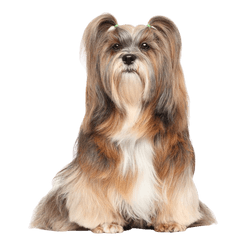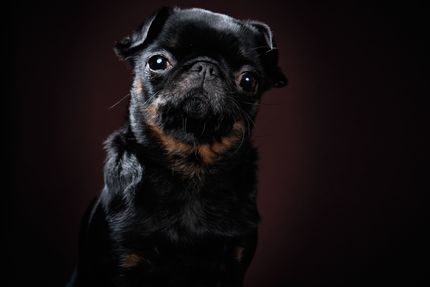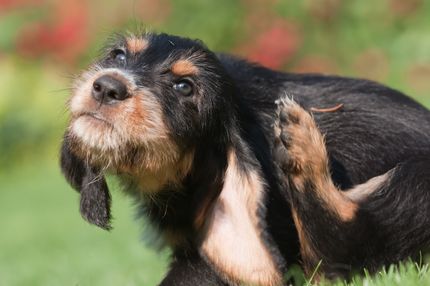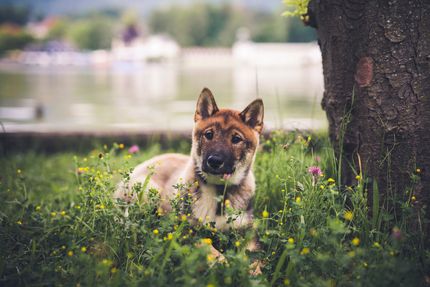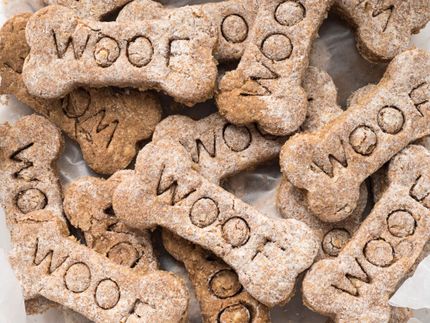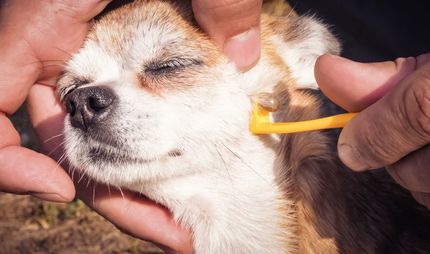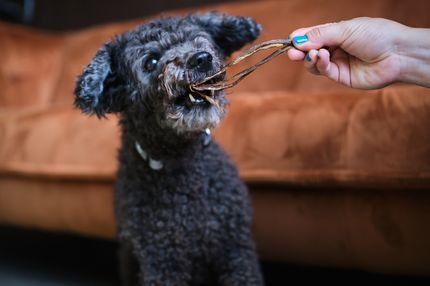Facts & Origin
Origin and history
A cross between the Australian Silky Terrier and Lhasa Apso, the Silky-Lhasa combines the charming personality and powerful presence of both breeds. Both parent breeds are known for their lively energy and happy nature. The Australian Silky Terrier originated in Australia and was bred to hunt rats. The Lhasa Apso, on the other hand, has its roots in the Tibetan highlands, where it was used as a guard dog in monasteries and noble houses.
Suitability and attitude
This charming mongrel has a lively and energetic personality. He is known for his courageous and independent temperament. Therefore, he is most suitable for people with a lot of time and patience who are willing to provide their dog with consistent training and plenty of exercise.
The Silky-Lhasa is also an excellent choice for families with children. He has a tolerant and playful nature that goes well with an active family life. Thanks to its small size, the Silky-Lhasa also fits well in an apartment as long as it has enough room to play and exercise.
| Alternate Name | - |
| Origin | Australia - Tibet |
| Life expectancy | 12 - 16 years |
| Care requirements | high-maintenance |
| Activity level | average - low |
| FCI group | not recognised |
| AKC group | not recognised |
| KC group | not recognised |
More Australian Silky Terrier mixes
More Lhasa Apso mixes
Attitude, character and temperament of the breed
Character of the Silky-Lhasa
The Silky-Lhasa is known for its loyalty and affection. They love to be around their humans and make excellent companion dogs. Their happy and adventurous temperament makes them a great addition to any family. They are intelligent and resourceful, which makes them a pleasure to train, but it can also mean that they sometimes have a stubborn streak.
Social dogs
Silky Lhasas love the company of people and other pets. However, they are not typical lap dogs. While they love to cuddle, they also need plenty of physical and mental stimulation. Their playful nature ensures that they are always ready for a game or a short walk.
Training and Socialization
It is important to socialize the Silky Lhasa early and start with gentle, but consistent training. They respond best to positive reinforcement and reward-based training methods. Note, however, that they have a fairly independent nature and sometimes have their own ideas about what they want to do.
Character
Usage
Care and health
TheSilky-Lhasa has a long, silky coat which requires regular grooming. At least once a week, the coat should be brushed to prevent matting. Bathing is required about every two months.
This hybrid breed is known for its hardiness, but like all dogs, the Silky Lhasa can develop certain health problems. These include eye and skin conditions, as well as patellar luxation. Regular vet visits are important to detect and treat potential health problems early.
Breeding the Silky-Lhasa
Breeding the Silky-Lhasa should only be done by experienced and responsible breeders. A high standard of genetics and health testing is required to ensure the welfare of the breed. Breeders should also make sure that the parents have a good temperament. The Silky-Lhasa is known for its lively and affectionate nature, and these traits should be prioritized when breeding.
What does this mixed breed look like?
The Silky-Lhasa has a silky and long coat. His physique is compact, yet elegant. Its usually silky ears and bushy tail, which is often carried curved over the back, are striking.
Coat colors vary among shades of cream, gold, silver, gray, and black, and combinations of these colors often occur.
| Fur length | long |
| Fur | flat coated |
| Ear shape | Standing Ears - Floppy Ear |
| Tail | short - rolled up |
| Anatomy | slim, slim |
| Size ♀ | 20 - 25 cm |
| Weight ♀ | 3 - 8 kg |
| Size ♂ | 20 - 26 cm |
| Weight ♂ | 3 - 8 kg |
| Suitable For | - |
Known Diseases
Cataract
Cataracts are still one of the most common causes of blindness, even in dogs.
Dermatophytosis
Dermatophytosis (synonym dermatophytosis, from ancient Greek τὸ δέρμα derma, German 'skin' and ancient Greek φυτόν phyton, German 'plant') or tinea (Latin for 'woodworm', 'moth') is a skin fungal disease caused by specific fungi (dermatophytes).
Ureteral ectopy
Ureteral ectopy (also known as ureteral ectopia) is an inherited condition where the ureter (known as the ureter) does not end in the bladder as usual due to a misalignment.
Hip dysplasia (HD)
Hip dysplasia (HD) is a genetic condition in dogs where the hip joint is not shaped properly. This leads to pain, stiffness and restricted movement.
Eye diseases
Often occur with allergies and intolerances.
Patellar luxation
Patellar luxation is the term used to describe a displacement of the kneecap, which is one of the most common causes of lameness in dogs.
FAQ
-
A Lhasa Apso and Australian Silky Terrier mix is a bright, loyal and energetic family dog.
-
This hybrid breed requires medium maintenance. Regular brushing and combing is required to avoid tangles and to maintain the natural shine of the coat.
-
This mongrel can usually live up to 15 years.

